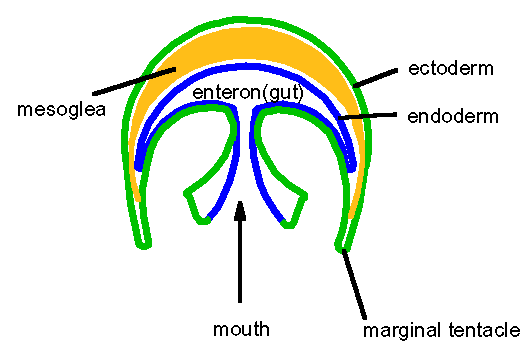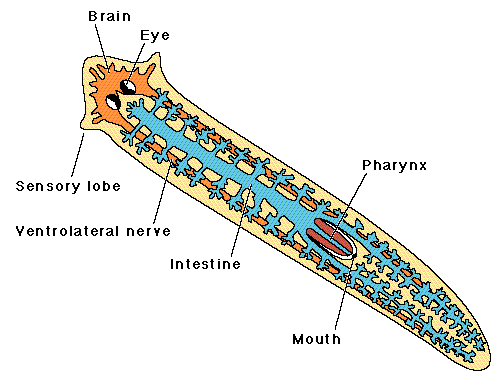
Classification Project
IB Biology SL
Evelina Stahl
Animalia
Kingdom
Characteristics
-
Multi-cellular organisms
-
Most are heterotrophics (depend on other organisms for food)
-
No rigid cell wall
-
Are mostly motile (move independently)
-
9-10 million animals, only identified 800,000
-
Organ systems
-
Cell structure (organelles)
-
Respiration
Phyla

Porifera (sponges)

-
multi-cellular
-
Pores/holes to feed themselves, no mouths
-
Live in water (mostly salt, but some in fresh)
-
Sexual and asexual reproduction
-
exoskeleton
Cnidaria (coral, jellyfish, sea anemones)
-
radially symmetrical
-
Aquatic
-
cnidocytes: cells that capture prey
-
mouths surrounded by tentacles
-
jelly-like bodies

Playthelminthes (flatworm)
-
Unsegmented, bilaterian bodies
-
No backbone
-
Soft bodies
-
No internal body cavities
-
Many are parasitic
-
Asexual and sexual reproduction
-
Live in moist areas

Nematode (roundworms)
-
tubular digestive systems: opening at both ends
-
Live in wide range of habitats
-
Many are parasitic
-
size varies: microscopic-more than 1m
-
sexual and asexual reproduction
-
Slender bodies
-
Use cuticle to move

Mollusca (slugs, snails, octopus)
-
Aquatic, terrestrial
-
No backbone
-
Very diverse: habitat, behavior
-
Mantle for breathing and excretion
-
Radula
-
Structure of nervous system
-
Same organ: multiple functions
- May have shell made out of chitin

Annelida (segmented worms)
-
No backbone
-
Live in ocean, fresh water, or moist terrestrial areas
-
Long bodies
-
Segmented (ring like)
-
Inter-independent segments (separate organs but shared cirulatory, nervous system and gut)
-
Cuticles

Arthropoda ( insects, arachnids, myriapods, and crustaceans)
-
No backbone
-
Exoskeleten
-
Segmented bodies
-
Jointed appendages
-
Cuticle made of a chitin and/or calcium carbonate
-
Some are hemaphroditic
-
Mostly sexual reproduciton, some asexual but not very common

Exchinodermata (starfish, sea urchins, sand dollars, and sea cucumber)
-
Marine animals
-
Radial symmetry
-
Mesodermal skeleton
-
Sponge like structure
-
Unique water vascular system
-
Simple radial nervous system
Chordata ()
-
Posses notochord
-
Hollow dorsal nerve cord
-
Pharyngeal slits
-
Endostyle
-
Bilaterally symmetric
-
Segmentation

